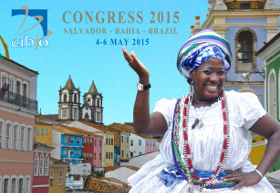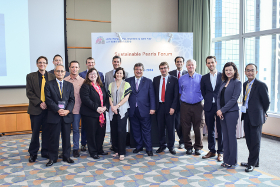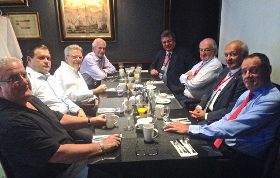2015 CIBJO Congress to take place in Salvador, Brazil, May 4-6
CIBJO, the World Jewellery Confederation, will hold its 2015 annual congress in Salvador, Brazil, May 4-6, 2015, with pre-congress meetings on May 2 and May 3. Salvador is the capital of the north-eastern Brazilian state of Bahia.
The congress will be hosted by Instituto Brasileiro de Gemas e Metais Preciosos (IBGM), working in close cooperation with the local jewellery association in Bahia, Associação Bahiana dos Produtores e Comerciantes de Gemas e Metais Preciosos, and with the strong support of the State Governor Jaques Wagner and his administration.
The main congress venue will be the Sheraton da Bahia Hotel, Salvador, located in a prime downtown location nearby the historic city centre of Pelourinho, which is a UNESCO World Heritage site and is renowned for its Portuguese colonial architecture, with historical monuments dating from the 17th to the 19th centuries.
“We are delighted to be issuing this invitation,” said Hécliton Santini Henriques, President of IBGM. “Our country is well-known as producer of gemstones, but we also are home to a vibrant jewellery industry and one of the most exciting developing markets in the world. We call on members of our industry from around the word to join us in the beautiful and exciting city of Salvador next May.”
“With the eyes of the world on Brazil today, it is most appropriate that CIBJO hold its first-ever Latin American congress in this vibrant nation,” said Gaetano Cavalieri, President of CIBJO. “As the largest country in a regional market worth more than $8 billion, I am sure that our industry will welcome the opportunity to learn more about what Brazil and Latin America offer. It promises to be an unforgettable event.”




